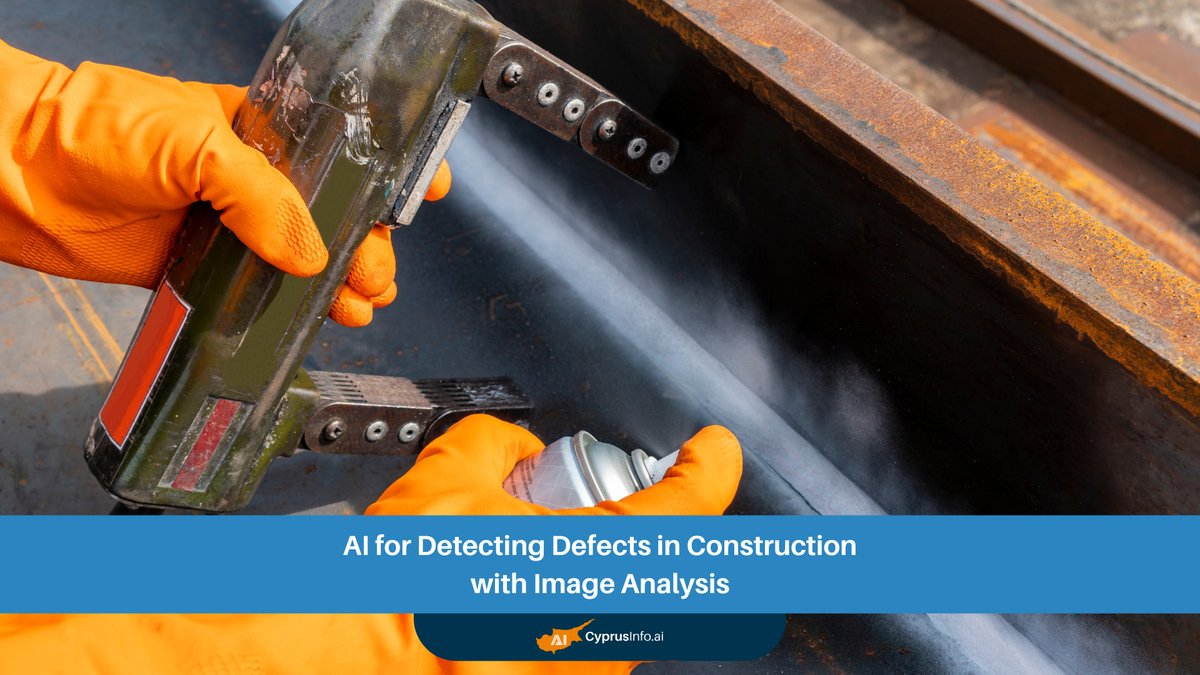The colossal structures that define our modern skylines are a testament to human ingenuity and engineering prowess. Yet, beneath the gleaming surfaces and intricate designs, the construction industry grapples with a persistent challenge: defects. From microscopic cracks to significant structural anomalies, undetected flaws can compromise safety, escalate costs, and delay project completion. Traditionally, identifying these defects has been a labor-intensive, time-consuming, and often subjective process, relying heavily on manual inspections and human expertise.
Enter the era of Artificial Intelligence (AI) and advanced image analysis. These transformative technologies are not just assisting but actively revolutionizing how the construction sector approaches quality control and defect identification. By leveraging powerful algorithms to process vast amounts of visual data, AI Construction Defect Detection is paving the way for unprecedented levels of accuracy, efficiency, and safety across the entire building lifecycle. This comprehensive guide delves deep into the mechanisms, benefits, applications, and future potential of AI-powered defect detection in construction, setting the stage for a new standard of building excellence.
The Critical Need for AI Construction Defect Detection
Construction projects, whether residential, commercial, or infrastructural, are inherently complex. They involve numerous stages, materials, and specialized tasks, each presenting potential points for error. The traditional methods of defect detection – primarily manual visual inspections, sometimes supplemented by basic tools – come with inherent limitations:
Human Error and Subjectivity: Inspectors can miss subtle flaws, become fatigued, or apply inconsistent judgment.
Time and Cost Intensiveness: Manual inspections are slow and require significant labor resources, especially for large-scale projects.
Accessibility Challenges: Reaching high elevations, confined spaces, or hazardous areas for inspection poses significant risks and logistical hurdles.
Lack of Data-Driven Insights: Traditional methods often don't provide systematic data for trend analysis or predictive maintenance.
The consequences of undetected defects are severe. They can range from minor aesthetic issues to catastrophic structural failures, leading to costly repairs, project delays, legal disputes, reputational damage, and, most critically, threats to human life. This rising complexity of modern construction projects demands advanced solutions that can overcome these limitations, making AI Construction Defect Detection not just a luxury but a necessity.
The escalating scale and intricate designs of contemporary construction necessitate a paradigm shift from traditional, reactive inspection methods to proactive, AI-driven solutions for superior quality and safety.
Understanding Image Analysis in Construction
At the heart of AI-powered defect detection lies image analysis. This technology involves extracting meaningful information from images, be it photographs, videos, or thermal scans. In construction, image analysis begins with data acquisition, where visual information is collected from various sources:
Drones and UAVs: Equipped with high-resolution cameras, drones can rapidly survey large areas, inaccessible heights, and dangerous locations, capturing aerial imagery.
Fixed Cameras and Sensors: Strategically placed cameras on construction sites can provide continuous monitoring, capturing real-time progress and potential anomalies.
Robots and Autonomous Vehicles: Ground-based robots can navigate complex indoor or outdoor environments, gathering detailed visual data from close proximity.
Handheld Devices: Inspectors can use smartphones or tablets to capture images and videos that are then fed into the AI system.
Once captured, these images undergo processing, which can include denoising, enhancement, and segmentation to isolate specific areas of interest. The processed data is then fed into AI models, particularly those leveraging machine learning and deep learning, for intelligent interpretation. This sophisticated image analysis in construction forms the backbone of automated defect identification, significantly enhancing the capabilities of construction real estate operations.
The Power of AI: Deep Learning and Computer Vision for Defect Detection
The true intelligence behind AI Construction Defect Detection comes from advanced AI techniques, primarily deep learning and computer vision. These fields enable machines to 'see,' 'understand,' and 'learn' from visual data much like humans do, but with unparalleled speed and consistency.
Deep Learning for Construction Defect Identification
Deep learning, a subset of machine learning, utilizes neural networks with multiple layers (hence "deep") to learn complex patterns from data. For defect detection, Convolutional Neural Networks (CNNs) are particularly effective. CNNs are designed to process pixel data and can automatically learn to identify features from images, such as:
Cracks: Hairline fractures in concrete, masonry, or asphalt.
Spalling and Delamination: Surface deterioration where layers separate or flake off.
Corrosion: Rusting of rebar or metal components, often visible as staining or expansion.
Water Leaks and Moisture Damage: Discoloration or material degradation caused by water ingress.
Misalignments and Deformations: Deviations from design specifications, such as uneven surfaces or structural shifts.
Material Degradation: Deterioration of building materials due to weathering, chemical exposure, or age.
By training these CNNs on vast datasets of images, meticulously labeled with various types of defects, the AI model learns to recognize these patterns independently. The more data it processes, the more accurate and robust its defect identification capabilities become, making deep learning for construction a game-changer.
Computer Vision in Construction for Automated Defect Inspection
Computer vision is the broader field that enables computers to interpret and understand the visual world. In construction, it facilitates automated defect inspection by not just identifying defects but also classifying them, quantifying their severity, and pinpointing their exact locations. For example, a computer vision system can:
Detect a crack: Identify its presence.
Classify the crack: Determine if it's a structural crack, a shrinkage crack, or a thermal crack.
Measure its dimensions: Quantify its length, width, and depth.
Map its location: Provide precise coordinates on the structure, often integrated with 3D models.
This level of detail is crucial for effective construction quality control and allows for proactive interventions. The integration of computer vision in construction significantly reduces the need for manual, subjective assessments, leading to more reliable and consistent outcomes.
Benefits of AI Construction Defect Detection
The adoption of AI Construction Defect Detection brings a multitude of benefits, transforming various aspects of construction management:
Benefit Category | Description |
|---|---|
Enhanced Accuracy & Consistency | AI models detect defects with high precision and provide consistent results, eliminating human variability and fatigue. They can spot anomalies invisible to the naked eye. |
Speed & Efficiency | Automated systems can process vast amounts of image data much faster than human inspectors, significantly accelerating the inspection process and reducing project timelines. |
Cost Reduction | Lower labor costs for inspections, reduced rework due to early defect identification, and minimized expenses from catastrophic failures. |
Improved Safety | Drones and robots can inspect dangerous or hard-to-reach areas, protecting human workers from hazardous conditions. |
Data-Driven Decision Making | AI systems generate rich, quantifiable data on defect types, frequencies, and locations, enabling better analysis, root cause identification, and predictive maintenance strategies. |
Proactive Maintenance | Early detection allows for timely repairs, preventing minor issues from escalating into major structural problems. |
AI transforms reactive maintenance into proactive defect prevention, ensuring the longevity and safety of construction assets while optimizing resource allocation.
Applications Across the Construction Lifecycle
The utility of AI Construction Defect Detection spans the entire lifecycle of a building or infrastructure project, from initial groundbreaking to long-term maintenance.
Pre-Construction and Planning
While direct defect detection is less relevant here, AI can analyze existing site conditions, terrain, and historical data to identify potential geological or environmental risks that could lead to future defects. This informs better design and material selection.
Construction Phase: Ongoing Monitoring and Quality Control
This is where AI shines brightest. During active construction, continuous monitoring with drones and fixed cameras allows for real-time defect identification. This facilitates immediate corrective actions, preventing minor issues from becoming entrenched. For instance, AI can monitor concrete pouring for voids, inspect welding joints for imperfections, or check rebar placement against design specifications. This continuous construction quality control ensures compliance and early problem resolution.
Post-Construction: Structural Integrity Monitoring and Predictive Maintenance
Once a structure is complete, AI continues to play a vital role in its upkeep. Regular automated inspections can detect early signs of wear, fatigue, or damage, enabling proactive repairs. This is crucial for structural integrity monitoring, especially for critical infrastructure like bridges, dams, and high-rise buildings. The data collected over time can be used for predictive maintenance construction, anticipating potential failures before they occur and scheduling interventions efficiently. Imagine an AI system flagging a micro-crack in a bridge support that, left unchecked, could lead to major issues years down the line. This proactive approach saves lives and millions in repair costs.
Digital Twin Construction Integration
The integration of AI Construction Defect Detection with digital twin construction technology offers a powerful synergy. A digital twin is a virtual replica of a physical asset, updated in real-time with data from sensors. When AI-identified defects are mapped onto the digital twin, stakeholders gain an immediate, comprehensive, and evolving picture of the structure's health. This allows for simulation of repair scenarios, assessment of structural impacts, and optimized long-term asset management.
Implementing AI-Powered Defect Detection: Challenges and Solutions
While the benefits are clear, implementing AI Construction Defect Detection isn't without its challenges. However, these are largely surmountable with strategic planning and expert guidance.
Data Acquisition and Annotation: High-quality, diverse datasets are essential for training robust AI models. This often means collecting thousands of images of various defects under different lighting and environmental conditions.
Solution: Partnering with specialized data collection services and utilizing semi-automated annotation tools can streamline this process. Initial manual effort for annotation pays dividends in model accuracy.Algorithm Training and Validation: Developing and fine-tuning AI models requires expertise in machine learning and computer vision. The models must be rigorously tested against new, unseen data to ensure their reliability in real-world scenarios.
Solution: Collaborating with AI development firms or leveraging off-the-shelf AI platforms designed for construction can accelerate deployment. Continuous learning models that improve with new data are also key.Integration with Existing Workflows: Seamlessly integrating AI systems with current construction management software, Building Information Modeling (BIM) platforms, and reporting tools is crucial for adoption.
Solution: Choosing flexible AI solutions with open APIs that can communicate with common industry software. Training staff on new workflows is also vital. BIM integration provides a contextual framework for identified defects, making the data actionable.Cost of Implementation vs. Long-Term Savings: The initial investment in AI hardware (drones, sensors) and software can be substantial, which might deter some companies.
Solution: Focus on calculating the Return on Investment (ROI) by quantifying savings from reduced manual labor, faster project completion, avoided rework, and enhanced structural longevity. Phased implementation can also help manage costs. Companies in Cyprus looking to invest in Cyprus tech can find incentives and support for such innovations.Regulatory and Standardization Evolution: As AI becomes more prevalent, the construction industry will need to adapt its regulations and standards to incorporate automated inspection results.
Solution: Active participation in industry bodies and pilot projects can help shape future standards and build confidence in AI-driven inspections.
Real-World Impact and Future Outlook
The impact of AI Construction Defect Detection is already being felt across the globe. Projects are seeing significant improvements in construction quality control, with faster identification of issues and more efficient resolution. For instance, in bridge inspections, drones equipped with AI can detect subtle cracks or corrosion that might be missed by human eyes, and do so in a fraction of the time, without exposing inspectors to hazardous heights or traffic.
The future of AI Construction Defect Detection is poised for even greater advancements:
Hyper-Realistic Digital Twins: Even more detailed and real-time digital replicas that can predict structural behavior under various stressors.
Autonomous Construction Robots: Robots not only inspecting but also autonomously repairing minor defects.
Integration with IoT and Smart Materials: Self-healing materials and embedded sensors that communicate directly with AI systems about their condition.
Predictive Analytics Beyond Defects: AI models that can forecast material degradation rates, predict maintenance cycles, and optimize replacement schedules.
Ultimately, AI is fostering a culture of safety in construction by proactively identifying risks. It shifts the industry from a reactive repair model to a proactive prevention model, ensuring the longevity and resilience of our built environment.
Quote: "The greatest benefit of AI in construction isn't just finding flaws, but building a future where flaws are fundamentally rarer, enhancing both longevity and human safety."
CyprusInfo.ai: Your Partner in Advanced Construction Quality Control
At CyprusInfo.ai, we understand the transformative power of AI in modern industries. For businesses in Cyprus and beyond looking to harness the capabilities of AI Construction Defect Detection, we offer unparalleled expertise and resources. Our platform is designed to connect you with cutting-edge AI solutions and specialists who can help integrate these technologies into your construction workflows.
We provide comprehensive support for adopting AI in various facets of your business, from initial consultation and technology assessment to implementation and ongoing optimization. Whether you're seeking to enhance your construction quality control, optimize project timelines, or improve safety standards, CyprusInfo.ai can guide you through the complexities of AI adoption. Our platform can connect you with specialists in computer vision, deep learning, and digital twin technology, ensuring you access the best tools and knowledge to elevate your operations. Explore how AI can revolutionize your business by visiting our blog and discovering resources like our guide on revolutionizing sales using AI to target foreign real estate buyers for Cyprus, which underscores our commitment to AI innovation in the real estate and construction sectors.
Frequently Asked Questions about AI Construction Defect Detection
What types of defects can AI detect in construction?
AI, particularly using computer vision and deep learning, can detect a wide range of defects including cracks (hairline to significant), spalling, delamination, corrosion, water damage, misalignments, deformations, material deterioration, and even subtle anomalies in surface textures.
How does image analysis contribute to AI construction defect detection?
Image analysis is the foundation. It involves collecting visual data (photos, videos, thermal scans) from drones, cameras, or robots, processing them, and then feeding this data to AI algorithms. The AI then interprets these images to identify, classify, and locate defects, making it an indispensable part of AI Construction Defect Detection.
Is AI more accurate than human inspectors for defect detection?
AI systems offer superior consistency and can detect subtle defects that human eyes might miss due to fatigue or limitations in access. While human expertise remains valuable, AI significantly enhances accuracy and provides objective, data-driven assessments.
What are the main benefits of adopting AI for construction quality control?
Key benefits include enhanced accuracy and consistency, increased speed and efficiency of inspections, significant cost reductions (due to less rework and proactive maintenance), improved safety for workers, and the ability to make data-driven decisions based on comprehensive defect reports.
How does AI integrate with Building Information Modeling (BIM)?
AI-detected defects can be directly mapped onto a BIM model, providing a visual and contextual understanding of the issue within the 3D building model. This integration streamlines defect management, repair planning, and long-term asset management, enhancing the value of BIM for construction projects.
What is the role of drones in AI-powered construction inspections?
Drones are crucial for data acquisition, especially for large or hard-to-reach areas. They capture high-resolution images and videos efficiently, which are then processed by AI algorithms for defect detection, significantly improving the speed and safety of inspections.
Can AI predict future defects in construction?
Yes, through continuous structural integrity monitoring and analysis of historical defect data, AI can contribute to predictive maintenance construction strategies. By identifying patterns and rates of degradation, AI models can forecast potential future issues, enabling proactive interventions.
What are the initial challenges in implementing AI construction defect detection?
Challenges include acquiring and annotating large datasets for training, the technical expertise required for algorithm development, integrating AI with existing project management systems, and the initial investment cost. However, these are often offset by long-term savings and increased efficiency.
How does AI improve safety in construction?
By deploying drones and robots for inspections, AI significantly reduces the need for human workers to access dangerous areas (e.g., high elevations, confined spaces), thereby minimizing risks and improving overall safety in construction projects.
Is AI-powered defect detection suitable for all construction project sizes?
Yes, while large-scale infrastructure projects benefit immensely, even smaller construction firms can leverage AI solutions through scalable platforms and services. The technology is becoming increasingly accessible and cost-effective for various project scales.
Conclusion: Building a Flawless Future with AI
The journey towards building safer, more resilient, and more efficient structures is continually evolving. AI Construction Defect Detection, powered by sophisticated image analysis, represents a monumental leap forward in this evolution. By transcending the limitations of traditional inspection methods, AI offers a pathway to unparalleled accuracy, speed, and safety in quality control.
From identifying microscopic cracks invisible to the human eye to enabling proactive maintenance strategies across vast infrastructure networks, AI is reshaping the very fabric of the construction industry. The integration with technologies like BIM and digital twins further amplifies its impact, creating an intelligent ecosystem where data drives decisions and defects are detected long before they escalate into costly or dangerous problems. As the industry continues to embrace these innovations, the vision of a flawless, sustainable, and robust built environment moves closer to reality, championed by the relentless progress of AI Construction Defect Detection.



